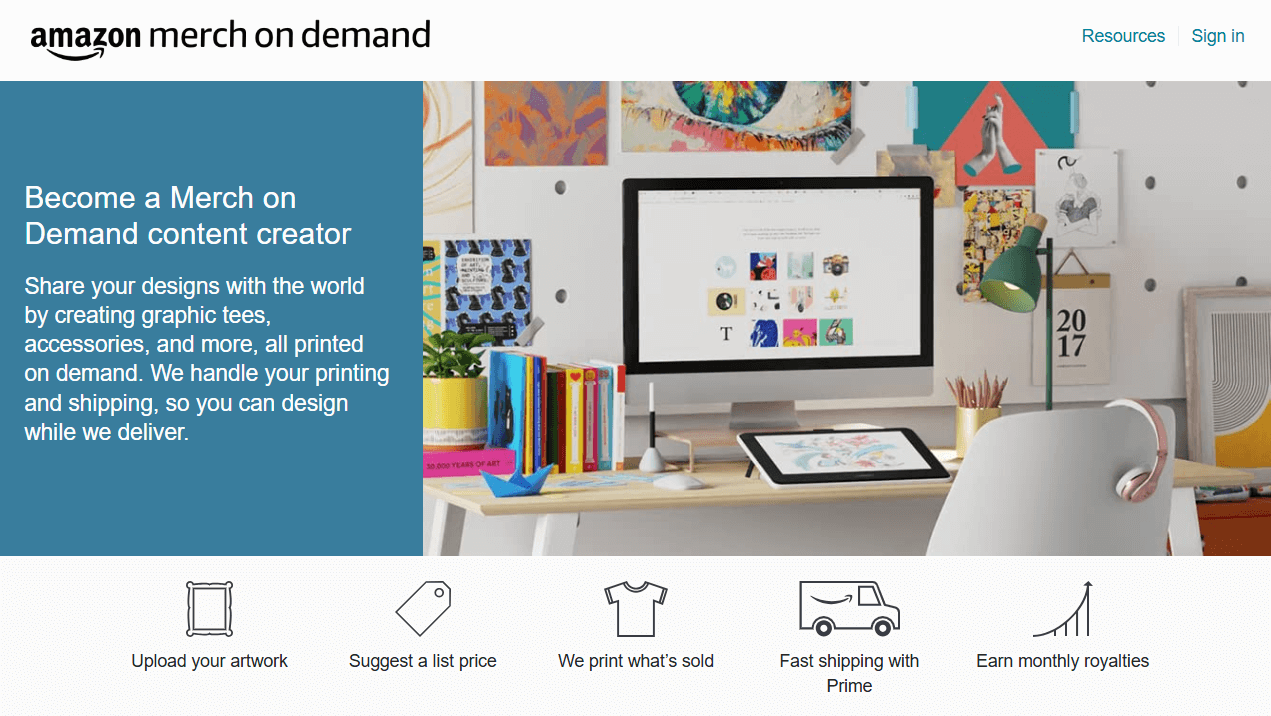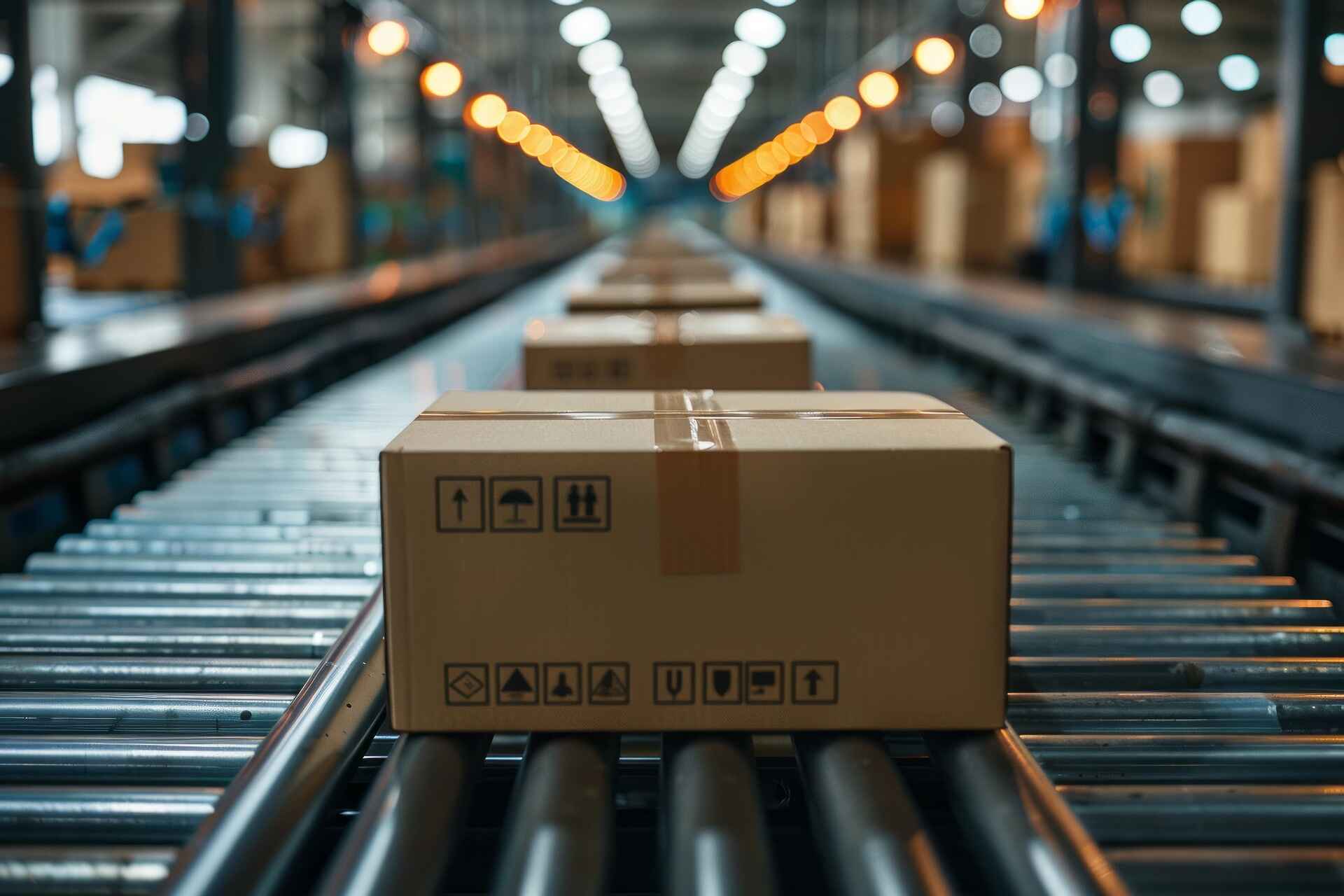Handling inventory isn’t always easy. It involves storage costs, upfront spending, and the likelihood of products not selling. That’s why many sellers wonder if they can sell on Amazon USA without keeping inventory on hand.
The answer is yes, it is possible. Amazon’s infrastructure and partnerships with third-party services make it easier for sellers to run a business without physically managing products.
If you’re trying to figure out how to sell on Amazon without inventory, here are a few methods you can explore.
-
You can sell on Amazon without inventory using methods like dropshipping, print on demand, KDP, and affiliate marketing.
-
Dropshipping allows you to sell products that ship directly from your supplier, so you don’t handle storage or shipping.
-
Print on demand lets you create and sell custom products like shirts or tote bags, and Amazon handles the rest.
-
Kindle Direct Publishing helps you sell books on Amazon without printing or storing copies yourself.
-
The Amazon Associates Program pays you commissions for recommending products, with no need to sell or ship anything.
1. Dropshipping
Dropshipping is one of the most popular ways to sell on Amazon without holding any inventory.
Instead of buying products in bulk, you only purchase an item after a customer places an order. That item is then shipped directly from your supplier to the customer—no storage, no packing, no shipping on your end.
This model cuts down your upfront costs significantly and makes it easier to scale. But while it sounds simple, success with dropshipping on Amazon depends on staying compliant, picking the right tools, and choosing dependable suppliers.
To get started, you’ll need an Amazon Professional Seller account. It’s a paid subscription, but it unlocks all the tools needed to run a serious store.
Before listing anything, it’s important to research your niche. You’ll want to find products that are in demand but not overly saturated. Tools like Jungle Scout, Helium 10, and ZonGuru can help you spot profitable products that people are actively searching for.
Once you’ve chosen a product, the next step is to find a reliable supplier. Many sellers start with platforms like AliExpress or CJ Dropshipping, but you’ll want to vet suppliers carefully. Look for good reviews, clear return policies, and—most importantly—fast shipping times. Amazon customers don’t like to wait.
After choosing your supplier, you’ll create your Amazon listings. Make sure to write clear product titles, descriptions, and bullet points that help your item stand out. Use high-quality images and be upfront about shipping times, especially if your supplier is based overseas.
If your listing promises delivery in five days and it takes three weeks, your customer isn’t going to be happy, and Amazon may take action on your account.
When an order comes in, you’ll place the order with your supplier using your customer’s information. Some sellers do this manually, but there are automation tools like DSers, AutoDS, and Inventory Source that can help streamline this process.
These tools can even sync inventory levels and automate price changes to keep your listings competitive.
Customer service is another essential aspect of dropshipping. Respond quickly to messages, provide tracking information as soon as it’s available, and keep your order defect rate low. Amazon is serious about protecting its buyers, so your seller metrics must stay strong.
Now, here’s where most resources and guides stop. But let’s go a bit further.
If your supplier is based overseas, you should make sure they offer shipping methods like ePacket or have US-based warehouses. Long shipping times are one of the top reasons sellers get complaints.
Also, don’t rely on just one supplier. Have backups in case a product goes out of stock or the price spikes overnight.
And while not many dropshippers consider it early on, some suppliers actually let you use branded packaging, even when dropshipping. That little touch can increase your reviews and customer satisfaction over time.
Additionally, once you find a product that sells consistently, consider ordering a small batch to send to an Amazon fulfillment center. Switching to Fulfillment by Amazon (FBA) for your bestsellers can increase your profit margins, qualify your products for Prime, and lead to even faster delivery times.
In short, dropshipping is a great way to start selling on Amazon without managing inventory, but it still requires careful planning, the right tools, and a commitment to good service. Done right, it can be the first step toward building a long-term, scalable Amazon business.
2. Print on Demand (POD) with Amazon Merch on Demand
If you’re a creative person who loves designing but doesn’t want to deal with physical products, Print on Demand might be your ideal entry into the Amazon marketplace.
Amazon Merch on Demand gives you a way to sell custom apparel—like t-shirts, hoodies, and even tote bags—without worrying about inventory, printing, or shipping.
This feature allows you to upload your original designs to the Merch by Amazon platform, choose the type of product you want to feature them on, and set your price. When a customer buys your item, Amazon takes care of the rest.

They print the design on the product, handle fulfillment, and ship it directly to the buyer. You earn royalties from each sale based on the price you set.
What makes this model so appealing is the low barrier to entry. You don’t need to buy any materials, manage returns, or worry about packaging. It’s a passive, hands-off way to build a side income—or even a full-time brand—especially if you have a knack for creating catchy slogans or standout graphics.
That said, Merch by Amazon is invite-only, so you’ll need to apply and wait for approval before uploading your designs.
While waiting, it’s a good idea to start researching trends in apparel, seasonal opportunities (like holiday-themed shirts), and basic SEO for Amazon listings. The more you understand what customers are looking for or what to sell on Amazon, the better your chances of getting noticed.
Once accepted, consistency is key. The more designs you upload, the higher your chances of earning steady royalties. Focus on high-quality visuals, clear branding, and relevant keywords in your product titles and descriptions.
Unlike typical dropshipping, the customer experience here is handled entirely by Amazon, which means quicker delivery times and fewer complaints, as long as your design quality meets their standards.
Print on Demand through Merch on Demand is a great way to turn your creativity into income. It requires very little upfront investment, and with the right strategy, it can become a reliable source of revenue over time.
3. Kindle Direct Publishing (KDP)
If you’ve ever dreamed of becoming an author—or you have knowledge you’d love to package into a book—Kindle Direct Publishing (KDP) is one of the easiest ways to get your work out there without printing a single copy yourself.
KDP allows you to publish both digital and paperback books on Amazon, and the best part? There’s no inventory involved. You simply upload your manuscript, along with your cover design, and choose your price.
Once your book is live, Amazon takes care of the rest. When someone orders a paperback, it’s printed on demand and shipped directly to the customer. For Kindle editions, delivery is instant and completely digital.
This model is perfect for writers, educators, and even business owners who want to share expertise or tell a story. And because Amazon handles the production and distribution, you don’t need to worry about printing costs, storage, or fulfillment logistics.
You earn royalties from each sale, and your book is available to millions of potential readers worldwide through Amazon’s massive reach.
One of the biggest perks of KDP is how accessible it is. You don’t need a publisher, a literary agent, or any upfront investment beyond your time and effort. It’s a do-it-yourself publishing platform with powerful potential.
Of course, the quality of your book—both the content and how you present it—matters a lot. Well-formatted text, professional cover art, and a keyword-optimized book description can make all the difference.
Some authors even use KDP to test out niche topics or low-content books like journals, planners, or coloring books, which can sell surprisingly well.
And if you’re writing fiction or nonfiction, it’s worth noting that Amazon’s algorithm tends to reward books that generate early reviews and steady sales, so launching with a bit of a plan—like building a small email list or sharing in niche communities—can help get the momentum going.
Whether you want to publish a memoir, share business tips, or create a fun notebook, Kindle Direct Publishing lets you turn your content into a product without ever managing physical inventory. It’s a practical, low-risk way to start earning passive income while sharing something meaningful with the world.
4. Amazon Associates (Affiliate Marketing Program)
If you have a blog, a YouTube channel, or even just a growing social media following, the Amazon Associates Program might be one of the easiest ways to earn income without selling—or storing—any products yourself.
First, you need to sign up as an affiliate. Then, you can start sharing special referral links to products sold on Amazon. When someone clicks your link and makes a purchase, you earn a small commission from the sale.
You don’t have to handle customer service, fulfillment, or shipping—Amazon does all of that. Your job is simply to drive traffic. This makes affiliate marketing through Amazon an attractive option for content creators who already produce helpful, review-based, or lifestyle content.

For example, if you write a blog post about your favorite kitchen tools or film a YouTube video reviewing fitness gear, you can link to those exact products on Amazon. If your audience trusts your recommendations, those clicks can turn into earnings.
What’s especially appealing is how flexible this method is. You can build a niche site dedicated to product reviews, create gift guides, or even use Instagram stories and Pinterest pins to share your links. And since Amazon sells just about everything, there’s almost no limit to what you can promote.
Of course, commissions are relatively small, usually ranging from 1% to 10%, depending on the product category. But with the right strategy and enough traffic, those small percentages can add up quickly.
One little-known perk is that you earn a commission on everything the shopper buys in that session, not just the item you linked to. So even if someone clicks on your link for a blender and ends up buying a couch, you still get paid.
If you’re consistent with your content and focus on building trust with your audience, the Amazon Associates Program can be a simple, low-effort way to generate passive income. It’s a great option for anyone who prefers to recommend products rather than sell them directly.
So yes, selling on Amazon without inventory is more than just a possibility. It’s a smart, accessible way to start or expand an online business. Whether you’re creative, analytical, or simply looking for a side hustle that doesn’t require a garage full of products, there’s a method that can fit your style.
Dropshipping lets you sell physical products without ever touching them. Print on demand gives artists and designers a way to turn ideas into real, shippable products. KDP allows writers and educators to publish books without a publisher or print run. And affiliate marketing through the Amazon Associates Program offers a completely hands-off way to earn by recommending products you believe in.
Each path comes with its own learning curve, but they all share one key advantage: you can get started without a lot of money or risk. And since Amazon already has the infrastructure and customer base, you’re not building from scratch—you’re plugging into a system that works.
If you’re looking for flexibility, low overhead, and real potential for growth, selling on Amazon without inventory is a great place to begin.







